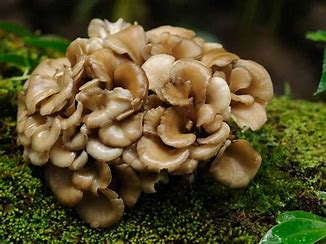Comfort meals
gives a sense of heat, nostalgia, and natural pleasure. Every lifestyle has its
very own version of consolation meals—dishes that offer solace, fill bellies,
and warm hearts. Let's take a adventure throughout the globe to find out ten of
the most loved comfort meals.
1.
Macaroni and Cheese (USA)
A
conventional American dish, mac and cheese is the epitome of comfort. The
mixture of creamy cheese sauce and smooth pasta makes it a pass-to meal for
children and adults alike. Whether baked or stovetop, it’s wealthy, indulgent,
and best for comfortable nights at home.
Why it’s
comforting: The gooey cheese and carb-loaded pasta create a nostalgic feeling
of domestic-cooked meals.
2. Ramen
(Japan)
Ramen is
extra than only a bowl of noodles—it's a cultural icon in Japan. Made with
savory broth, soft noodles, sliced beef, and frequently crowned with a
smooth-boiled egg, this warm dish gives consolation throughout bloodless
winters or wet days.
Why it’s
comforting: The rich, flavorful broth and hearty noodles are both filling and
fulfilling.
3.
Shepherd’s Pie (UK)
Shepherd’s
Pie is a traditional British dish made with ground meat (typically lamb or
pork), vegetables, and crowned with mashed potatoes. Baked till golden and
crisp, this dish is hearty and perfect for less warm climates.
Why it’s
comforting: The creamy mashed potato topping mixed with the wealthy, savory
meat filling creates a satisfying contrast of textures and flavors.
4.
Poutine (Canada)
A staple
in Quebec, poutine combines crispy French fries, cheese curds, and a
beneficiant ladle of wealthy gravy. It’s the final indulgence, offering
consolation in each bite.
Why it’s
comforting: The aggregate of crunchy fries, melted cheese curds, and heat gravy
hits all the right notes for a comforting snack or meal.
Five.
Pho (Vietnam)
Pho is a
fragrant Vietnamese noodle soup made with red meat or chook, fresh herbs, and
rice noodles. The broth is slow-cooked with spices like cinnamon, famous person
anise, and cloves, giving it a deep, comforting taste.
Why it’s
comforting: The heat, fragrant broth and soft noodles offer nourishment and a
experience of calm.
6.
Butter Chicken (India)
This
rich, creamy curry is one among India’s maximum beloved dishes. Butter chicken
is made with a tomato-based sauce, cream, and numerous fragrant spices. It’s
often served with naan bread or rice, making it a complete, comforting meal.
Why it’s
comforting: The silky texture and ambitious flavors create a warming,
pleasurable meal this is best for any occasion.
7.
Moussaka (Greece)
Moussaka
is a conventional Greek dish made with layers of eggplant, minced meat
(commonly lamb or beef), and béchamel sauce, all baked to perfection. The rich,
layered flavors make it a favourite in Greek households.
Why it’s
comforting: The combination of creamy béchamel and tender, flavorful meat
creates a balanced, hearty meal.
Eight.
Goulash (Hungary)
A hearty
stew, goulash is made with beef, vegetables, and a generous amount of paprika.
It’s a traditional Hungarian dish that has been loved for hundreds of years,
specially throughout the less warm months.
Why it’s
comforting: The slow-cooked stew is warming, filling, and has a deep, smoky
flavor that makes it ideal for cold climate.
Nine.
Chilaquiles (Mexico)
A
Mexican breakfast preferred, chilaquiles include crispy tortilla chips simmered
in salsa (green or red) and crowned with eggs, cheese, and cream. Sometimes,
shredded chicken or beans are brought to make it heartier.
Why it’s
comforting: The aggregate of crunchy chips and rich salsa creates a fulfilling
and flavorful meal, best for mornings.
10.
Köttbullar (Sweden)
Swedish
meatballs, or Köttbullar, are often served with a creamy gravy, mashed
potatoes, lingonberry sauce, and every so often pickled cucumbers. The savory
meat combined with the sweet jam creates a completely unique and comforting
flavor.
Why it’s
comforting: The creamy sauce, soft meat, and trace of sweetness from the
lingonberry sauce make it a well-rounded and pleasing dish.
Conclusion:
Comfort
ingredients go beyond borders, bringing a feel of warmth and familiarity,
irrespective of in which you're. Whether it’s a bowl of creamy mac and cheese
or a aromatic bowl of pho, these dishes offer a delicious way to connect with
cultures around the sector whilst enjoying the simple pride of a
domestic-cooked meal.








